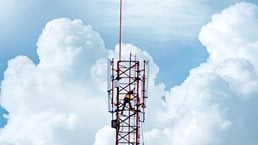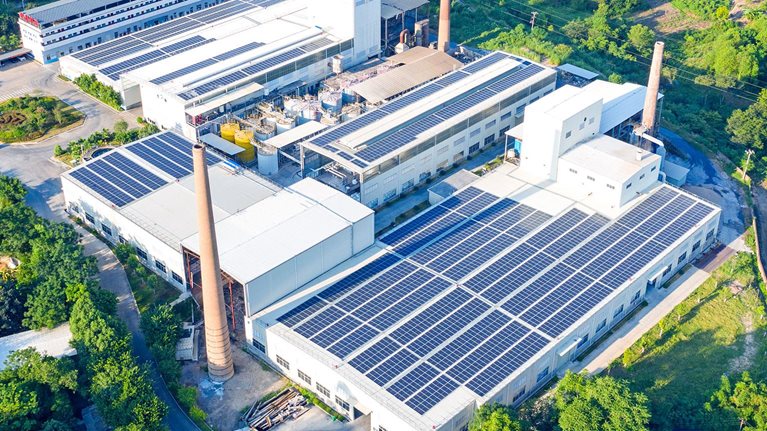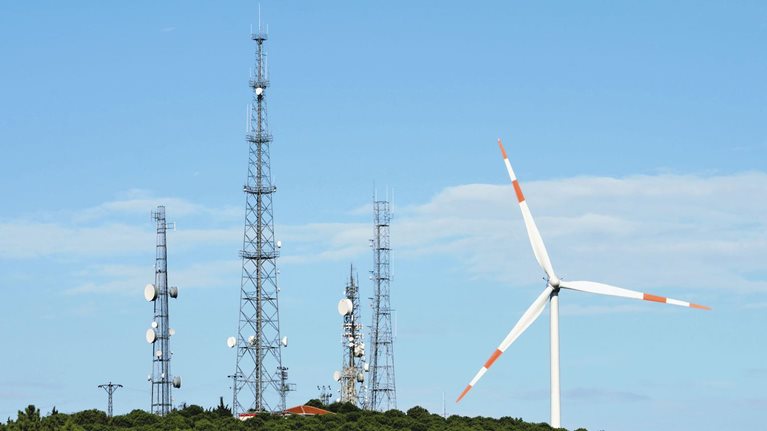Recent energy price hikes have hit the telecommunications sector hard, compounding the increased energy use involved with building out networks, traffic growth, and the ongoing transition away from legacy technologies. Energy spending was already a significant cost factor for telecom operators, at up to 5 percent of revenue, before recent price hikes. In the last few years, though, large operators have seen their energy cost increases outpace sales growth by more than 50 percent. Yet even as they set ambitious decarbonization targets, operators’ responses to rising energy-related costs have been muted so far, constrained by operational and organizational limitations.
It is possible, though, to achieve significant savings on energy, by combining analytics, procurement, and technology shifts with the right vision, strategy, and organizational approach. Our research shows that companies can achieve 15 to 30 percent savings in energy cost by using a holistic approach that combines technology solutions with site and equipment optimization, pricing, and operational levers to create substantial and sustainable change.
In this article, we assess the causes of energy cost increases and how operators are coping with them, and we offer a potential path forward through better site design, a shift toward energy-efficient technologies, analytics-based optimizations, and the implementation of pricing levers.
Sources of pressure
Geopolitical pressure and increased demand are expected to keep electricity prices high in most markets in the near term. According to the World Bank, for example, energy commodity prices are not expected to fall below pre-2022 levels in the coming year. For telecom operators, the problem is compounded by the expected growth in mobile traffic, which is forecast at more than 20 percent per year until 2030. This forces them to pay more for electricity and use more of it.
Together, mobile- and fixed-network consumption already account for more than 75 percent of telcos’ total energy consumption. Additional, exponential growth in data consumption over the next five years will likely offset the benefits of more energy-efficient data transmission protocols. In addition, site densification to support new wireless technologies such as 5G (and eventually 6G) will further increase telcos’ total energy consumption. And although fiber rollout is progressing, operators must still support multiple, less-energy-efficient legacy systems until all customers have migrated to the newer infrastructure.
At the same time, telcos are also making commitments to carbon neutrality that will require them to optimize their energy consumption. The industry as a whole has pledged to reach net zero by 2050 at the latest, and the most ambitious operators are striving to do it as early as 2025. Tackling the carbon footprint associated with network operation will be critical to reaching those targets, given that networks account for the largest part of telcos’ Scope 1 & 2 emissions and more than 25 percent of their average total greenhouse-gas output.
It isn’t only the telcos themselves that are applying pressure to advance decarbonization efforts. The sector is estimated to be responsible for up to 2 percent of global carbon emissions, so its efforts are likely to be both scrutinized and incentivized by sustainability-focused consumers and climate impact funds led by activist investors. Pressure is likely also to come from regulators around the world, as they begin to adopt their own decarbonization goals and factor sustainability considerations into their policies.
State of the industry
To bolster our understanding of this challenge, we surveyed telecommunications leaders around the world regarding their concerns about energy management, the outlook or the future, and how they plan to tackle the obstacles that lie ahead.1 Their focus on the energy issue is growing, with 67 percent of respondents stating they have significantly accelerated cost-optimization efforts over the past two years. They cited a variety of worries about energy issues, chief among them economic volatility, geopolitical instability, and energy pricing volatility (Exhibit 1). They acknowledge the challenge will not be resolved by external factors alone, with only 27 percent of respondents saying they expect prices to decrease. However, those surveyed indicated that their ability to mitigate energy risk and optimize costs is hampered by operational and organizational deficits.

Operational considerations: Most telcos today are managing a geographically dispersed network, often with thousands or tens of thousands of sites, a variety of technology configurations, and limited capabilities for remote management. This complexity, combined with still-nascent smart-network management, presents another challenge: 53 percent of our survey respondents said their use of real-time energy monitoring tools, such as smart meters or DC probes, was limited or nonexistent, and many operators indicated they lack granularity in their measurements, with only 33 percent tracking energy KPIs at the individual site level.
These deficits further limit operators’ ability to implement more strategic and analytics-driven energy cost-and-consumption reduction levers such as digital twins2 and self-optimizing networks. Indeed, when asked which advanced tools are most important to reducing energy costs, only 20 percent of our survey respondents said they have used self-optimizing networks in the last three years, and only 3 percent said they use digital twins, the lowest figure for any cost lever. And while most operators surveyed said they use radio access network (RAN) equipment power-saving features, 37 percent said they do so without monitoring impact or optimizing parameters.
Operators’ focus remains mostly on tactical and incremental consumption reduction and on pricing and procurement levers. Here, too, current efforts have room for improvement. While most of the operators surveyed plan to build new sites to high standards of energy-efficiency, only a third plan to upgrade their existing brownfield footprint, and while 93 percent have carried out passive equipment updates, such as rectifiers or modern power cables and air conditioning systems, most have done so only on a small scale. Finally, only 33 percent of respondents said they source most of their energy consumption via wholesale power purchase agreements (PPA)s, meaning that two-thirds are still exclusively paying dynamic, market-rate fees for their electricity or using PPAs in only a limited fashion.
Would you like to learn more about our Technology, Media & Telecommunications Practice?
Organizational considerations: Even though most telcos understand these challenges, their ability to address them remains limited by organizational considerations, such as inadequate governance. Of our survey respondents, 40 percent said they spread energy-related strategy and decision making across multiple departments (Exhibit 2). As a consequence, 20 percent said their energy initiatives are relatively uncoordinated, and another 37 percent said their energy operations have weak accountability and incentive systems. The lack of clarity in accountability allows for slippage in day-to-day energy-related operations. Additionally, the nature of the optimization initiatives in this field requires buy-in from various parts of the organization, which puts the initiatives at a disadvantage from the start, increasing their complexity, limiting their scope, and diminishing their impact as a result.

The opportunity at hand
To tap into the next level of energy savings, operators have four main tools at their disposal: zero-based design of mobile network sites, optimizing energy use with analytics, strategic innovation in the pricing and sourcing of energy, and decommissioning legacy fixed networks (Exhibit 3). Crucially, a considerable portion of the potential can be achieved without significant investments or major strategic changes, and the results can be quantified within a few weeks of implementation.

Zero-based design of mobile networks: The energy consumption of mobile networks is strongly influenced by the design and layout of each mobile site. Previously, network evolution focused on equipment upgrades, not improved site design. As a result, operators invested in energy-efficient cabinets on new sites, but the opportunity to optimize energy consumption at legacy sites was left on the table. Tapping into this potential requires a detailed understanding of the drivers of energy consumption at current sites through a structured approach that correlates consumption with specific legacy-site design features and includes detailed site walkthroughs to identify overlooked opportunities for lowering costs.
Optimizing cooling equipment is the first step, which often involves recalibrating power to match equipment needs, partitioning shelter space, improving insulation, and enhancing temperature specifications and remote controls. Depending on the region, another tactic might be reducing the need for mechanical refrigeration by using naturally cool air or water. Other substantial savings can be made in site-level consumption through targeted investment in high-efficiency, active equipment such as baseband units (BBU) and radio, rectifiers, and power cables.
Finally, more far-reaching network design optimization can be done through a shift to a centralized RAN architecture, in which multiple sites share network functions located in a “BBU hotel” to achieve benefits of scale and network sharing. However, switching to centralized RAN and network sharing would be a significant, strategic and capital-intensive change and therefore unlikely to be driven solely by energy-optimization considerations. Nevertheless, these initiatives hold substantial potential to curb energy consumption and they should be considered as part of a holistic network cost transformation.
Analytics-driven optimization of energy: While operators have tended to use meters to estimate the active consumption of 4G and 5G equipment, they typically have had limited ability to forecast “normal” consumption for legacy technologies, transmission, and passive equipment. The use of on-site measurement devices like AC and DC probes is expensive, and therefore also limited. Leading telcos use digital twins and analytical models to forecast energy consumption more accurately at individual sites, identify deviations, and define action plans.
Highly detailed correlations of energy consumption with other metrics (network traffic and quality of service, perhaps) for specific sites or for elements of network infrastructure can facilitate real-time decision making. Radio features might be dynamically activated based on site-level thresholds or network load at specific times of day or different seasons, for example, allowing operators to optimize their network where and when it matters most, enhancing customer experience.
In addition to real-time action, data analytics also enables more long-term and structural strategic decision making on energy consumption. By assigning values such as direct average revenue per user (ARPU), customer experience scores, and churn estimates to individual sites or network elements, operators can develop a “return per kWh” metric for different parts of their network infrastructure. This allows them to further adjust network operating conditions, such as radio shutdowns, to minimize energy consumption without impacting actual customer experience.
Pricing and sourcing: The many operators that still do not exclusively or primarily use wholesale power purchasing agreements and hedging options are missing a valuable opportunity to decrease and derisk energy costs, as well as access green energy without incurring capital expenses.3 In much of Europe, for example, choosing a ten-year purchasing agreement over baseload year-ahead prices can save between 5 and 20 percent. Telecom operators can make particularly good utility partners in green-energy agreements, given that telco network consumption correlates with peak daylight hours, eliminating the need to store wind- or solar-generated electricity in batteries. Another option is virtual (or financial) power purchasing agreements. These financial instruments don’t involve the physical delivery of energy but can be a way to indirectly access green energy in regions that lack actual green-energy generation while helping new providers get their businesses off the ground. Ideally, a telco would precisely project its energy demand and select a combination of power purchasing agreements and green on-site solar generation capacity that offers dynamic volume and closely matches its energy consumption, both over time and in different geographies. This approach maximizes the deployment of renewable energy and minimizes price risk. For example, a telco with significant access to solar power might choose to increase its usage at the times of day when overall power usage is highest and traditional energy sources are charging peak rates.
Telcos are also well positioned to generate their own electricity, an option that can improve operational agility on energy sourcing and provide a new—if small—line of income. Solar-generated electricity is especially attractive, given telcos’ network footprint and the daytime demand on it. Solar panels can partially satisfy that demand and, combined with a battery installation, can be used in the form of “load balancing” as an energy cost-savings asset. For example, the Finnish mobile- network operator Elisa converted its lithium-ion battery capacity into a virtual power plant. The system stores energy from wind, solar, or local hydroelectric plants and releases it back onto the grid when supply levels fall and market prices rise. This virtual plant contributes to the stability of the local renewable energy system and provides a cost-saving opportunity. Elisa uses a proprietary, cloud-based AI/ML system daily to optimize its stored, consumed, and resold capacity based on its projected demand and energy prices. The approach offers greater control over energy sourcing, and the operational advantage of extending backup capacity from three to nine hours. It also provides a bit of income from energy released back to the grid, which strengthens the business case for gree= energy investments.

Telecom networks: Tracking the coming xRAN revolution
Legacy fixed network decommissioning: Fiber networks’ energy consumption per connection can be 70 to 80 percent lower than copper. This disparity will only grow as more energy-efficient fiber technologies emerge, so migrating copper connections and decommissioning copper networks are critical. The extent of the decommissioning benefits is determined by the scope of implementation involved. A key aspect of copper-network phaseouts is the ability to migrate customers in a given network cluster so that the telco doesn’t have to maintain a copper network in parallel to newly deployed fiber. Comprehensive migration requires both fiber availability and a commercial campaign to persuade customers to upgrade to fiber. The opportunity goes beyond copper, however; central offices house energy-hungry equipment that supports other services, such as legacy transmission and B2B platforms, which can also be migrated to products based on fiber underlay.
Successful migration of copper and other legacy-product customers in whole network clusters can reduce server space needs enough to enable decommissioning entire buildings, since fiber networks require so much less server infrastructure. This can be an important consideration when designing the architecture of new fiber clusters. Partial building decommissioning can bring benefits. But telcos may want to weigh the more-immediate capital-expense savings from using legacy buildings for aggregation points against the potentially greater long-term operating-expense savings of simplifying building footprints after decommissioning copper lines. Some operators have plans to reduce their central office space by more than 50 percent in the transition from copper to fiber-to-the-home (FTTH), leveraging longer loop lengths in fiber. While the main rationale for this kind of simplification is related to real estate, it also benefits several operational expense components, most notably the energy consumption required for air conditioning.
Decommissioning buildings can also fuel energy optimization by enabling the redesign of cooling systems. Because fiber requires less space for servers, cooling demand can drop dramatically, from whole rooms cooled by industrial-grade air conditioning units to a limited number of racks requiring much simpler cooling solutions. Even if this change does involve some initial capital investment, the savings that result should arrive quickly.
A successful decommissioning is always a cross-organizational effort. The technology and operations organizations have to design and implement the decommissioning, while commercial leadership needs to incentivize migrations and phase out legacy products. Alignment between decommissioning plans, fiber rollout strategy, and capital allocations needed for the desired energy optimization requires involvement of the finance and strategy units.
Two fundamental enablers
Achieving this kind of optimization takes more than a vision and strategy for energy consumption. To derive the full value possible from energy optimization, operators need to put in place the right operating model and technology enablers to support it.
Clear decision-making governance: Most telco operating models spread energy decisions across multiple senior stakeholders, usually a combination of chief technology officer, chief procurement officer, and chief sustainability officer. This joint responsibility is not necessarily an impediment to change, but when not supported by clear decision-making governance, the resulting uncertainty can slow transformation and value creation. For example, a chief technology officer may have a vision for reducing consumption through a site design overhaul, but without buy-in from procurement on purchasing, finance on investments, and commercial operations on quality control, there is no way to fully realize the potential of the proposed initiatives.
To successfully support energy transformation, some key operating elements should be in place. First, a single senior leader should own the end-to-end vision and strategy, which includes consumption reduction, price control, and strategic investments to sustain the transformation. That leader should work closely with other senior decision makers in their areas of expertise but should have final responsibility for carrying out the energy vision. Also, the senior leader’s work should be supported by KPIs and clear governance to ensure collaboration across the organization on the shared goal.
Technology enablers: Analytics advancements such as digital twins and IoT devices such as smart meters can help provide detailed and timely understanding of energy consumption across a telco’s network, and even help seize opportunities quickly.
Digital twins are based on models that capture data from physical assets in real time to simulate them virtually. In the context of telecommunications networks, they can visualize and analyze traffic patterns, operational metrics, equipment usage, and resource consumption. When applied to energy optimization, a digital twin can help size and capture the energy savings opportunity by detecting outlier sites and identifying the drivers of overconsumption. A digital twin can also help deploy new energy-efficient sites by finding the optimal equipment and layout configurations. Moreover, detailed energy consumption projections can inform energy procurement, strengthening the implementation of pricing levers such as hedging or power purchase agreements. In more advanced digital twin use cases, multiple telcos can collaborate to develop cross-trained learning models to produce more rapid and qualitative insights soon after implementation.
A North American telecom operator used an energy-focused digital twin to achieve an annual energy cost reduction of more than $100 million. By standardizing energy cost and consumption data across its network, the telco was able to identify anomalies and understand underlying drivers more rapidly. Initiatives implemented included data-driven decision making on decommissions, real-time network optimization, and improving the performance of vendor equipment. Additionally, the company uses its digital twin’s standardized data and consumption models to improve calculations of emissions and energy cost forecasting.
Digital twins and other technology enablers require a data infrastructure to enable consistent insights across the network, which is made up of multiple asset types and geographies. This can be a challenge for network operators, who are often awash in unstructured data. Smart meters can help augment a network operator’s data infrastructure and ability to understand energy consumption across the network based on real-time sensor data. After putting in place a consistent data infrastructure and measurements to feed into it, telcos need to have a certain level of analytics capabilities.4 The maturity of the data infrastructure will determine the difficulty of providing valuable insights. For example, a customized data infrastructure with limited consistency across the network will require more-skilled analytics teams and customized analytics models to clean data and extract actionable insights. On the other end, a single, consistent digital twin of the network enables implementation of plug-and-play analytics models, with quicker, more in-depth and typically more accurate insights.
Technology can also play an important role in acting on opportunities identified by analytics initiatives. Increasingly, energy optimization levers can be delivered remotely, provided the right technology investments are in place. For example, remote network-management capabilities can enable instant and at-scale implementation of improvement actions, such as air conditioning temperature control and remote capacity optimization. This helps avoid operational complexity, delays, and costly implementation plans, while ensuring consistency in implementation as well as measurement and control of deployed changes.
An ongoing imperative
Telecom operators stand to benefit substantially from thorough energy optimization. Much of the benefit depends on data maturity and deployment of the right analytics. Telcos that are able to do this well are more likely to outperform their peers.
The pressures driving the need for network energy optimization are expected to remain, if not increase. Energy costs and consumption are likely to continue rising, as is the need for decarbonization. Also, of the challenges the telecommunications industry faces, energy optimization is among the most feasible to pursue and achieve. Given that network usage accounts for three-quarters of a telco’s energy consumption, achieving the 15 to 30 percent total energy cost savings possible with the methods we describe would be significant.
A successful network energy optimization effort starts with an analysis of the optimization options available and the value at stake in undertaking them. Ideally, a holistic set of potential levers should be considered, to ensure options that may seem on their face to be too difficult or to offer too little benefit, are given proper analysis. For example, even a decade ago, solar might have been easily dismissed, but solar energy options have advanced considerably since then. Finally, implementing a network energy optimization program should involve both technological enablers and operating model changes, if the full benefit of the tech solutions is to be realized.


